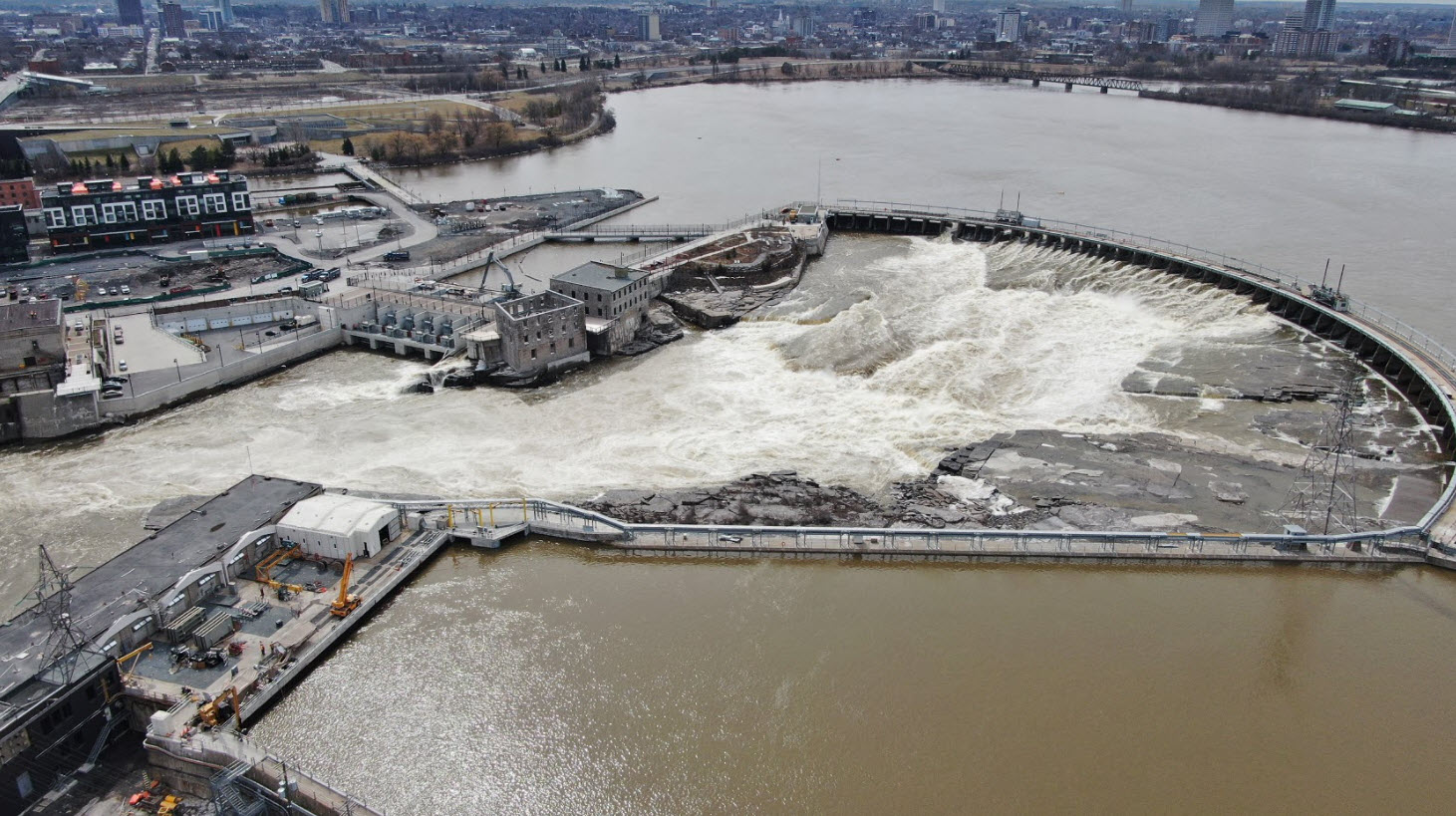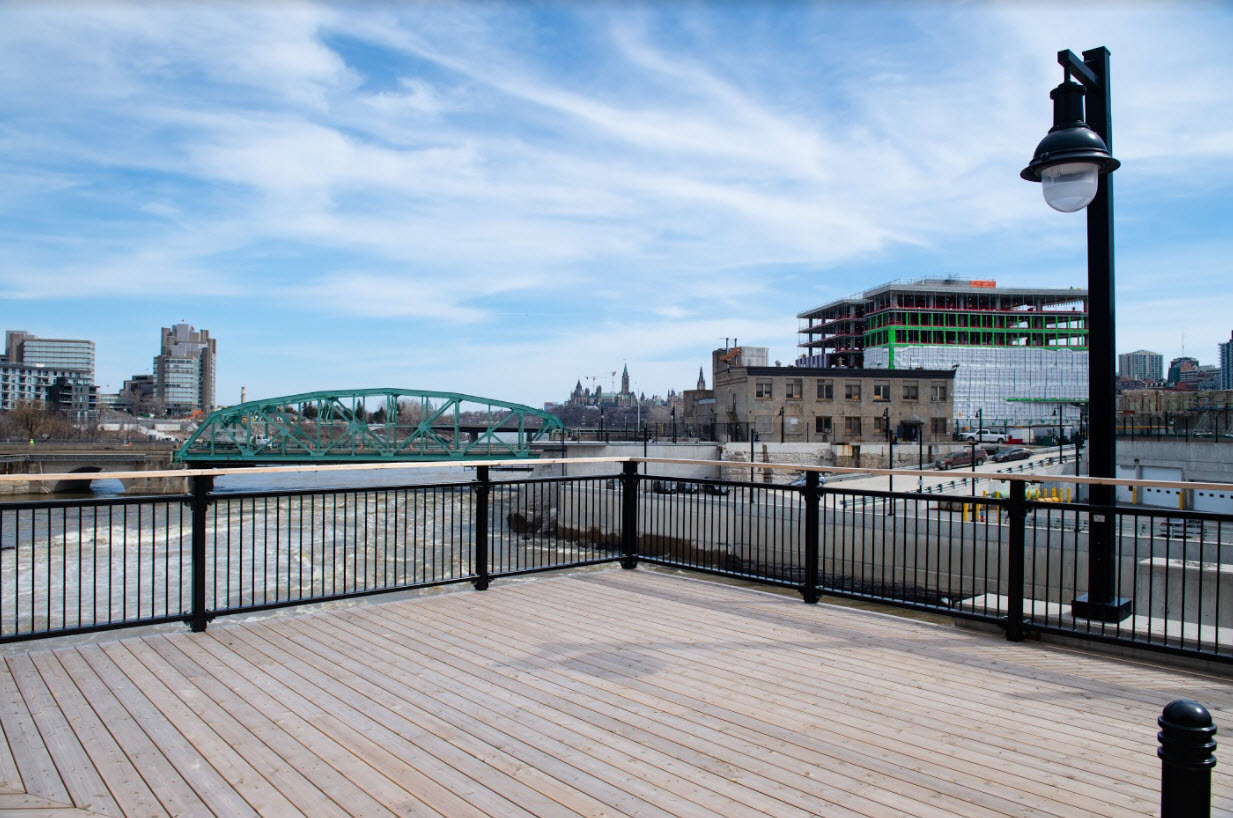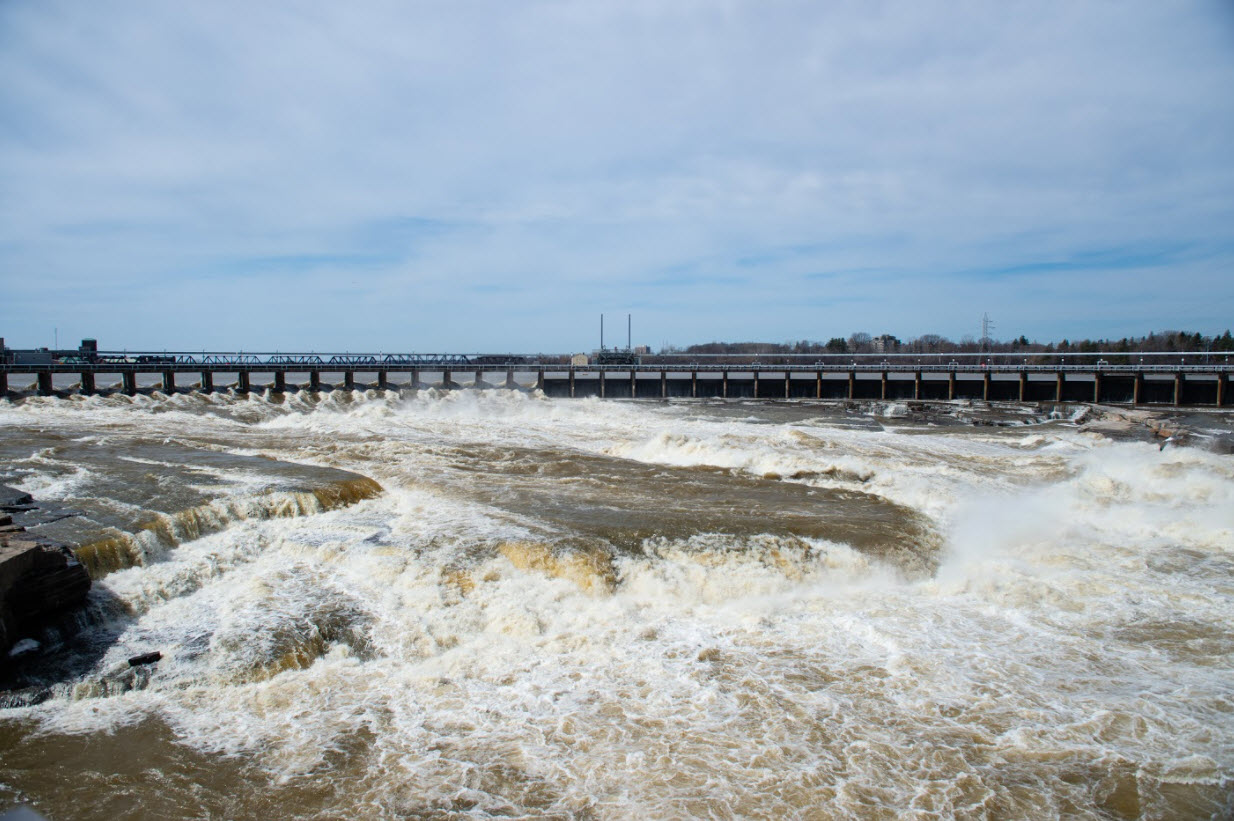For more than a century, one of our National Capital Region’s most beautiful and sacred sites was industrialized, fenced off, and hidden from view. That all changed in 2018 when Hydro Ottawa opened the historic Chaudière Falls site to the public, and provided guided tours of its newest 29-megawatt hydroelectric station as part of the City of Ottawa’s annual Doors Open Ottawa event.
That was the first and only time the hydroelectric station was open to the public since it was energized. In 2019, record flooding on the Ottawa River created conditions too dangerous for visitors, and as we all know, the COVID-19 pandemic struck in 2020, necessitating a lot of doors to close for public health reasons.
This year, Hydro Ottawa decided to work within the constraints of the pandemic by throwing its virtual (albeit, not literal) doors open for an online event with Doors Open Ottawa. If you haven’t had the opportunity to see Chaudière Falls or the hydroelectric facility up close, you can enjoy the experience in a video that takes you deep inside the station as well as up and over top of the falls with breathtaking views of the entire site - all from the comfort of your own home.
Honouring the past
Situated in Ottawa’s downtown core, less than 1.5 kilometres from the Parliament of Canada, the historical significance of Chaudière Falls predates Canada.
Algonquin Anishinaabe and other First Nations have lived on this territory for millennia and consider Chaudière Falls a sacred site due to its significance as a meeting place, portage site, and trade route. And it was at Chaudière that Indigenous travellers made offerings of tobacco to the river to try to ensure a safe journey.
Nearly 200 feet wide with a 49 foot drop in elevation, it’s cauldron-like shape and the spray that arose from the churning water inspired the Algonquin First Nation to name the falls “Asticou,” usually translated as “kettle” or “boiler.”
Samuel de Champlain wrote about the power of the falls and its sacredness to Indigenous Peoples in his journal on June 14, 1613, calling the falls “Chaudière” (also meaning “kettle”).
In the 1800s, after colonization, the damming of the Ottawa River and development of industry led to the shoreline being populated with a vast complex of lumber mills and factories, effectively closing the Chaudière Falls off to all.
During that time, the site also became the birthplace of electricity in Ottawa and home to Canada’s oldest hydroelectric station still in operation today – the heritage-designated Generating Station No. 2 on the adjacent Victoria Island. Chaudière was responsible for lighting Ottawa’s streets with electricity and it fueled the industrial explosion of the mid-1800s by providing water power to the mills.
Ottawa prospered, industrialists profited and the demand for electricity increased, but something was lost.
Honouring the environment
Hydro Ottawa’s vision for the Chaudière Falls expansion became clearer and more intentional as the project took shape. It would produce clean, renewable energy in an environmentally responsible way; create an open public space to be enjoyed by all; and serve as a place of recognition and celebration of First Nations culture and Ottawa’s industrialist past.
The expansion presented a unique opportunity for Hydro Ottawa that would see it contributing to a more sustainable, healthy river. As part of its environmental commitment, the new facility includes screens to divert the endangered American Eel and other species into bypass channels and past the facility’s four EcoBulb turbines. It is expected that eel survival rates have increased from 79.8 per cent to 99.3 per cent as a result.
In addition to stunning new viewing platforms, a pedestrian bridge across the intake canal and a revitalized park space that pays homage to its Indigenous roots and colonial past, the company took a restorative approach in refurbishing two of the site’s oldest buildings (once part of J.R. Booth’s lumber empire) that survived the Great Fire of 1900, and in its relationship with local Indigenous communities by proposing that the site be used for ceremonies and celebrations.
Honouring a sustainable future
The new below-grade 29-megawatt hydroelectric facility feeds into the provincial grid and powers 20,000 homes with clean, renewable energy; reducing greenhouse gas emissions by 115,000 metric tons of CO2 every year.
Under its subsidiary Portage Power, Hydro Ottawa owns all six hydroelectric generating stations at Chaudière Falls in both Ontario and Quebec, as well as the Ring Dam.
In fact, across the Ottawa River, Hydro Ottawa is refurbishing two of the hydroelectric generating stations that it acquired from Hydro-Québec in 2016. The restorations will extend the life expectancy of the facilities while bringing additional clean, renewable power into Ontario. The refurbishments include new turbines and generator upgrades, extensive upstream and downstream civil works and other electrical and mechanical improvements.
In total, Hydro Ottawa has 128 megawatts (MW) of installed green generation (enough to power 107,000 homes annually) that includes 16 run-of-the-river hydroelectric facilities in Ontario, Quebec and New York State, eight large solar installations in partnership with the City of Ottawa, and majority shares in two landfill gas-to-energy plants.
When it’s safe to do so, we invite you down to take in the scenic views and enjoy the park space. We look forward to an uneventful 2022 so we can once again see you in person and welcome you with open arms - and doors.
In the meantime, set a reminder in your calendar to enjoy a virtual Chaudière Falls experience with an exclusive video we made just in time for Doors Open Ottawa (available June 5 and 6 on their website and at chaudierefalls.com). We hope that it leaves you excited to visit this beautiful, sacred site that is also home to Ottawa’s clean, sustainable energy future.





